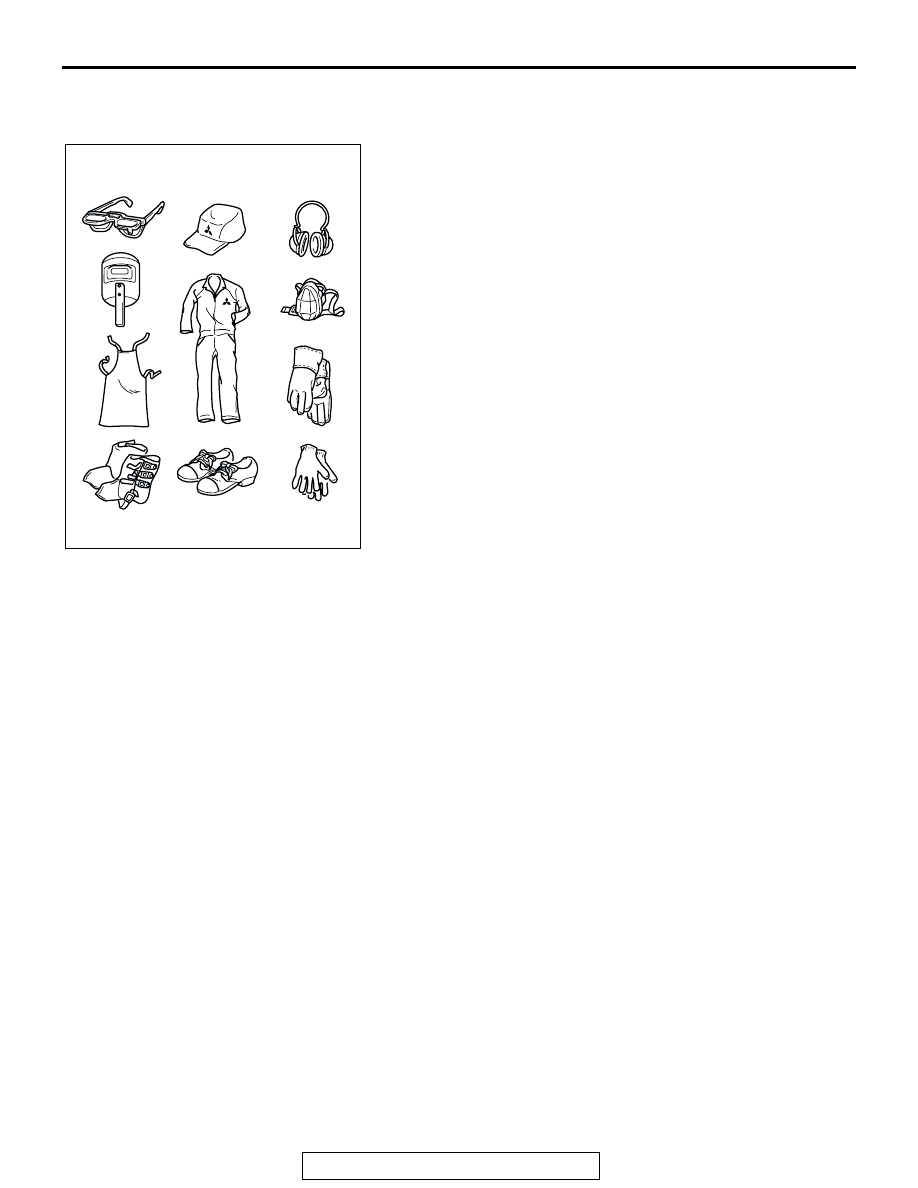Mitsubishi Galant (2004+). Manual - part 38

BODY REPAIR
TSB Revision
BASE OF BODY REPAIR
9-31
NOTES REGARDING REPAIR WORK
M4090015000028
SAFETY MEASURES
.
PROTECTIVE GEAR
During body repair work, a work suit, a work cap, and safety
shoes should be worn at all times. Depending on the work
being done, safety glasses, gloves, ear protectors, a dustproof
mask, etc., should also be worn as needed.
1. Safety glasses
2. Work cap
3. Ear protectors
4. Head protector
5. Work suit
6. Dustproof mask
7. Work apron
8. Welding gloves
9. Foot and ankle protectors
10. Safety shoes
11. Work gloves
.
SUPPLEMENTAL RESTRAINT SYSTEM (SRS)
1. Items to review when servicing SRS
(1) Be sure to read Service Manual GROUP 52B,
Supplemental Restraint System (SRS). For
safe operation, please follow the directions
and heed all warnings.
(2) Wait at least 60 seconds after disconnecting
the battery cable before doing any further
work. The SRS system is designed to retain
enough voltage to deploy the air bag even
after the battery has been disconnected.
Serious injury may result from unintended air
bag deployment if work is done on the SRS
system immediately after the battery cable is
disconnected.
(3) Warning labels must be heeded when
servicing or handling SRS components.
(4) Always use the designated special tools and
test equipment.
(5) Store components removed from the SRS in a
clean and dry place. The air bag module
should be stored on a flat surface and placed
so that the pad surface is facing upward.
(6) Never attempt to disassemble or repair the
SRS components (SRS-ECU, air bag module
and clock spring). If there is a defect, replace
the defective part.
(7) Whenever you finish servicing the SRS, check
the SRS warning light operation to make sure
that the system functions properly.
(8) Be sure to deploy the air bag before disposing
of the air bag module or disposing of a vehicle
equipped with an air bag.
2. Observe the following when carrying out
operations on places where SRS components are
installed, including operations not directly related
to the SRS air bag.
(1) When removing or installing parts, do not allow
any impact or shock to occur to the SRS
components.
(2) If heat damage may occur during paint work,
remove the SRS-ECU, the air bag module,
clock spring, the front impact sensor, the side
impact sensor, and the seat belt pre-tensioner.
•
SRS-ECU, air bag module, clock spring, front
impact sensor, the side impact sensor: 93
°
C
(200
°
F) or more
•
Seat belt pre-tensioner: 90
°
C (194
°
F) or more
.
AB200104
1
4
5
6
7
8
9
10
11
2
3